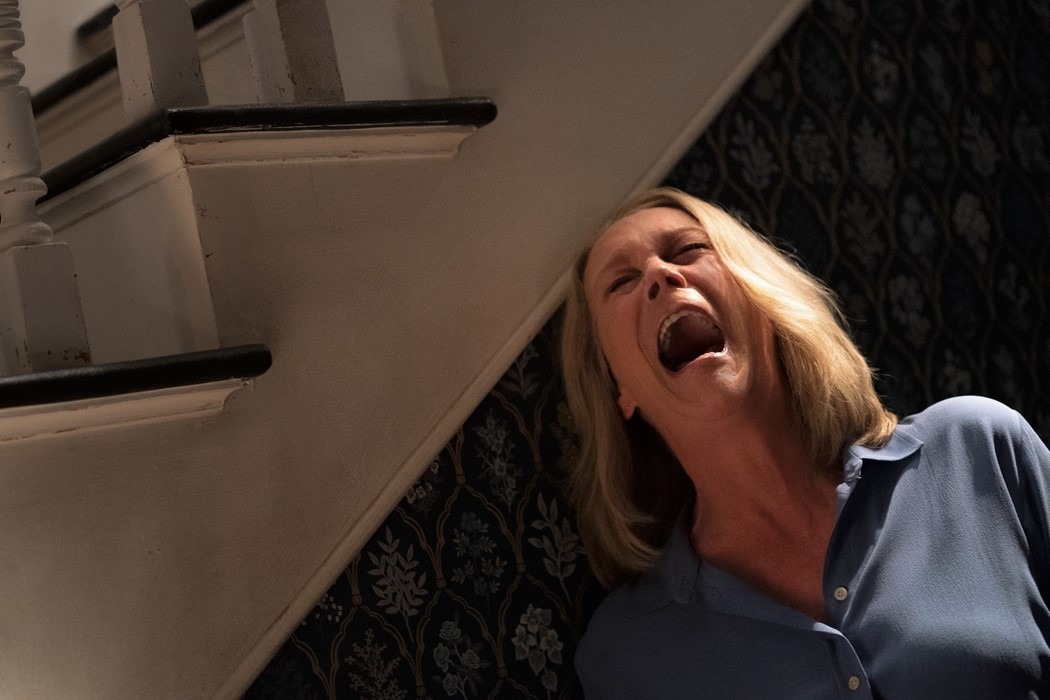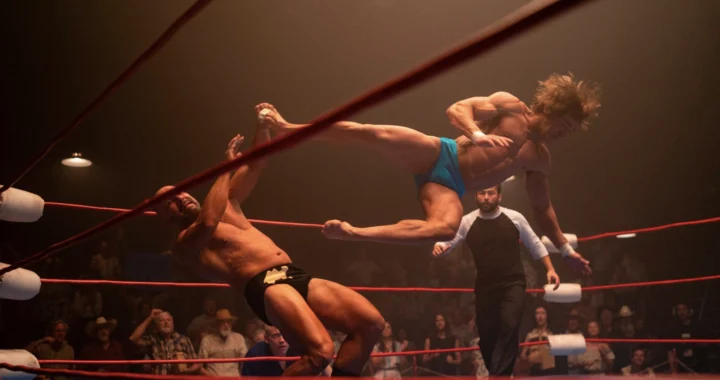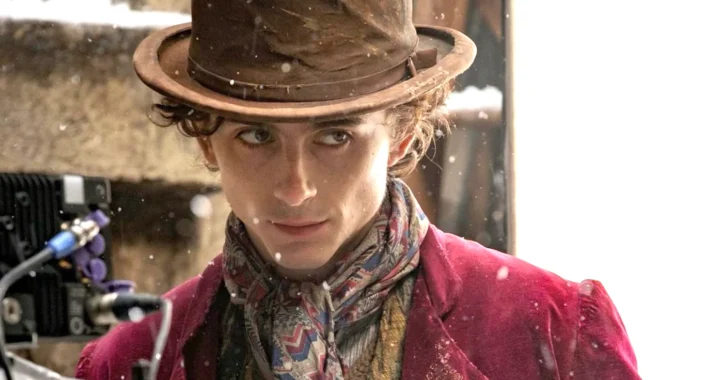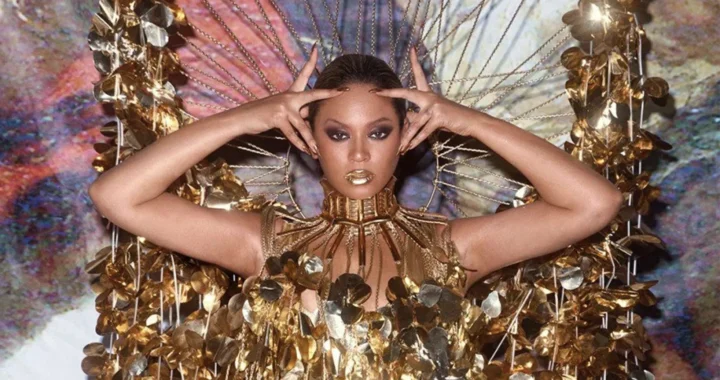Ahead of the release of Halloween Ends and her seventh turn as the iconic Laurie Strode, we try to talk to the actor about getting into character
Ever since John Carpenter’s iconic 1978 slasher Halloween, the residents of Haddonfield have been slowly dying off, often in cinematic, brutal ways, usually around the end of October, almost certainly at the hands of a masked man named Michael Myers. Sometimes there are a few years in between – it depends on contract negotiations – but Myers always returns to terrorise locals who really should remember to double-lock the door on October 31.
One of Haddonfield’s more famous residents, Laurie Strode, played for the seventh time by Jamie Lee Curtis, was a teenager in the 1978 film. In Halloween Ends, the 13th of the franchise and the third in a row directed by David Gordon Green, Laurie is a grieving grandmother still traumatised from the events of Halloween, Halloween II, and – well, you get the idea. What’s changed in Halloween Ends is that Laurie, four years on from the events of Halloween Kills, has attempted to move on by writing a memoir at her laptop (this is also a recurring image in Eastbound & Down, a sitcom whose star, Danny McBride, co-wrote Halloween, Halloween Kills, and Halloween Ends with Green).
Whereas the 2018 Halloween played it safe plot-wise and delivered the hits (literally, in terms of Carpenter’s score), Halloween Kills went the opposite direction with atypical, love-it-or-hate-it storytelling twists. Halloween Ends is even more unpredictable as it introduces a brand new main character, Corey (Rohan Campbell), an outcast who accidentally kills a child in the cold open and doesn’t fit into the Final Girl formula – except for having a name that rhymes with Laurie.
In fact, much of the movie is a coming-of-age drama that’s more broody than bloody, and oddly reminiscent of Green’s early grief-exploring indies like George Washington and Snow Angels. That is, until it climaxes with a faceoff between Michael and Laurie. By the time the credits roll, you’ll understand why the film’s called Halloween Ends – and it’s not because the final scene unfolds on November 1.
In Ham Yard Hotel, I tell Curtis, 63, that my idea for an article is to do Jamie Lee Curtis’s guide to acting in a horror franchise. On the page, there would be subheadings, and the tone could be as fun, serious, or technical as she wishes. After all, we’ve heard of the Meisner approach and the teachings of Stanislavski. So what about the Curtis Method? Full of cheer, she responds, “The Curtis Method – I like it!”
I ask Curtis if she ever exercises her facial muscles. “The first scene we shot of Halloween Ends was in the supermarket with Laurie and Frank,” she says. “When I finished it, I couldn’t believe how much my jaw hurt. I couldn’t figure it out. I realised it was because Laurie is smiling for the first time. In horror films, there are a lot of ‘oh’s.” She demonstrates a silent gasp as if Michael Myers was standing behind me. “But the smiling muscle isn’t implemented in screaming. I learned to make sure that if you’re going to smile in a horror movie, to figure out a way to do it where it doesn’t hurt your face at the end of the day.”
So is it like when opera singers warm up before a performance? “I don’t do anything,” Curtis replies, matter-of-factly. “The most I do is jump up and down. I’ll pretend I’m skiing if I’m supposed to be out of breath.” Does she ever rehearse her screams before it’s captured on camera? “There’s no practising.” If she’s in a happy mood, how does she get into the mindset for a Halloween film? “I’m an actor. An untrained actor. You tell me to feel sad, I feel sad. If I have to cry about something, I’ll cry about something. It’s just what I do.”
Eventually, Curtis reveals she has a “trick” (she immediately retracts the description and insists it’s not a “trick”) when it comes to crying on command: music. A few examples include Bette Midler (“she has a voice that kills me”), Brandi Carlile (“helpful”), and the Nanci Griffiths song “It’s a Hard Life Wherever You Go” (“it just reminds me of how hard life is for some people”).
Does she keep a diary like Laurie does in Halloween Ends? “I don’t write anything down. I burn everything. I’m going to burn all the letters people have written me. There’s going to be a big bonfire… I don’t want people dissecting letters after I’m dead.”
“Honestly, friend, I love the idea of what you’re trying to come up with, but it’s just not me, babe” – Jamie Lee Curtis
Without giving anything away, Halloween Ends serves to honour Laurie in a way that previous instalments did not. Laurie actually died in 2002’s Halloween: Resurrection, a film that’s ignored in Green’s trilogy; when traumatic flashbacks in Laurie’s memory pop up in Halloween Ends, they’re mostly from Carpenter’s 1978 original, also Curtis’ first-ever film. But it’s a trauma shared throughout Haddonfield. The locals, including those with dead or paralysed relatives, openly blame Laurie for their suffering: the reason Michael keeps returning is that Laurie never left the town.
Given the flashbacks, I ask Curtis if she ever rewatched the original film to prepare for Halloween Ends. “I don’t watch anything,” she insists. “I lived it. I was there. I remember every word I’ve ever said in any movie at any time. I remember the second grade Christmas pageant when I had to recite part of the Christmas story of the birth of Jesus, and I could recite it to you now, word for word, from when I was seven.”
It’s apparent that the horror icon is horrified about having to define the Curtis Method. “Honestly, friend, I love the idea of what you’re trying to come up with, but it’s just not me, babe…. I know you’re trying to do something different.” She adds, “I’m not going to make something up for you.”
Halloween Ends is in cinemas on October 14



